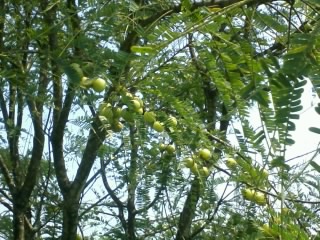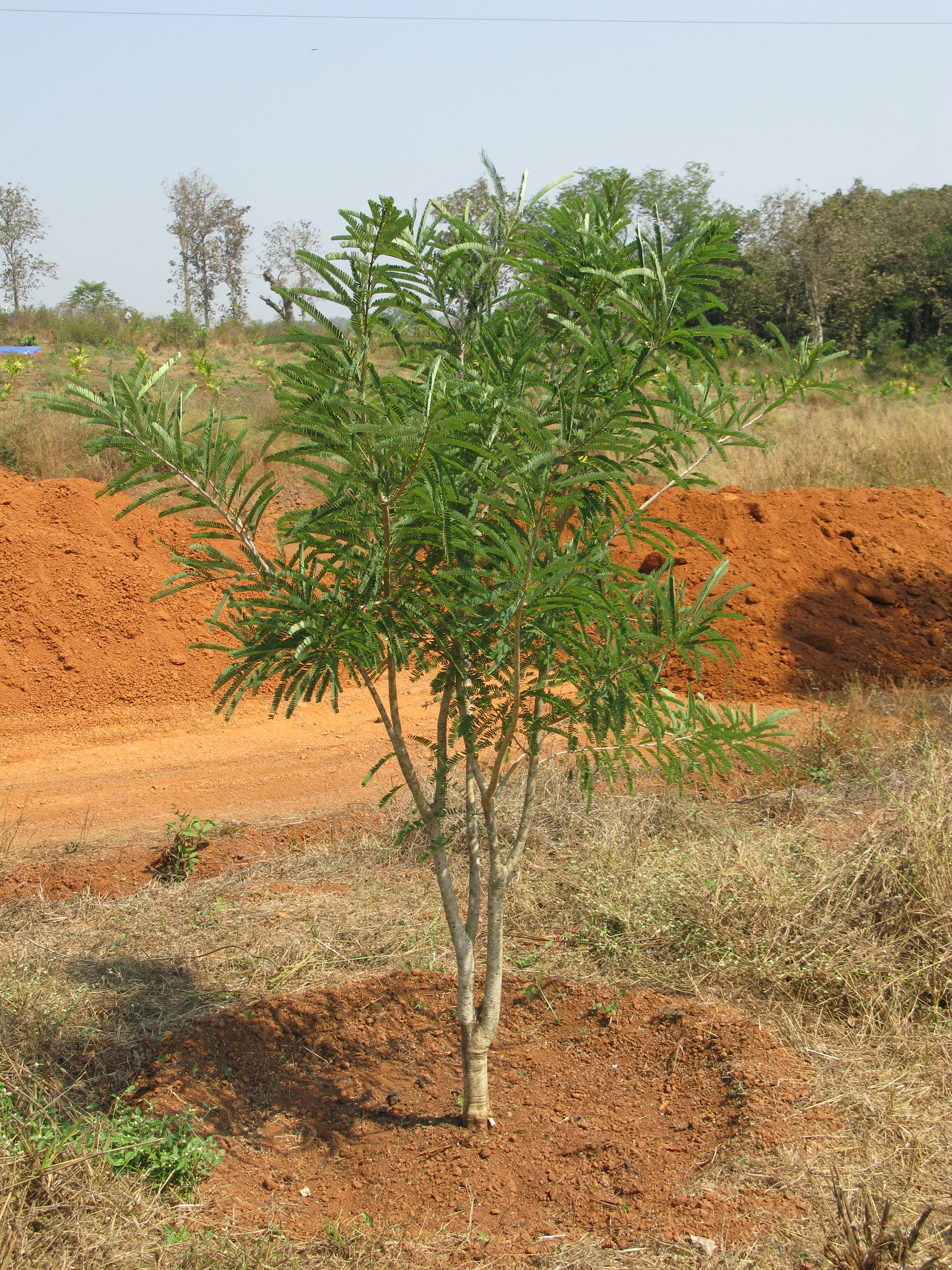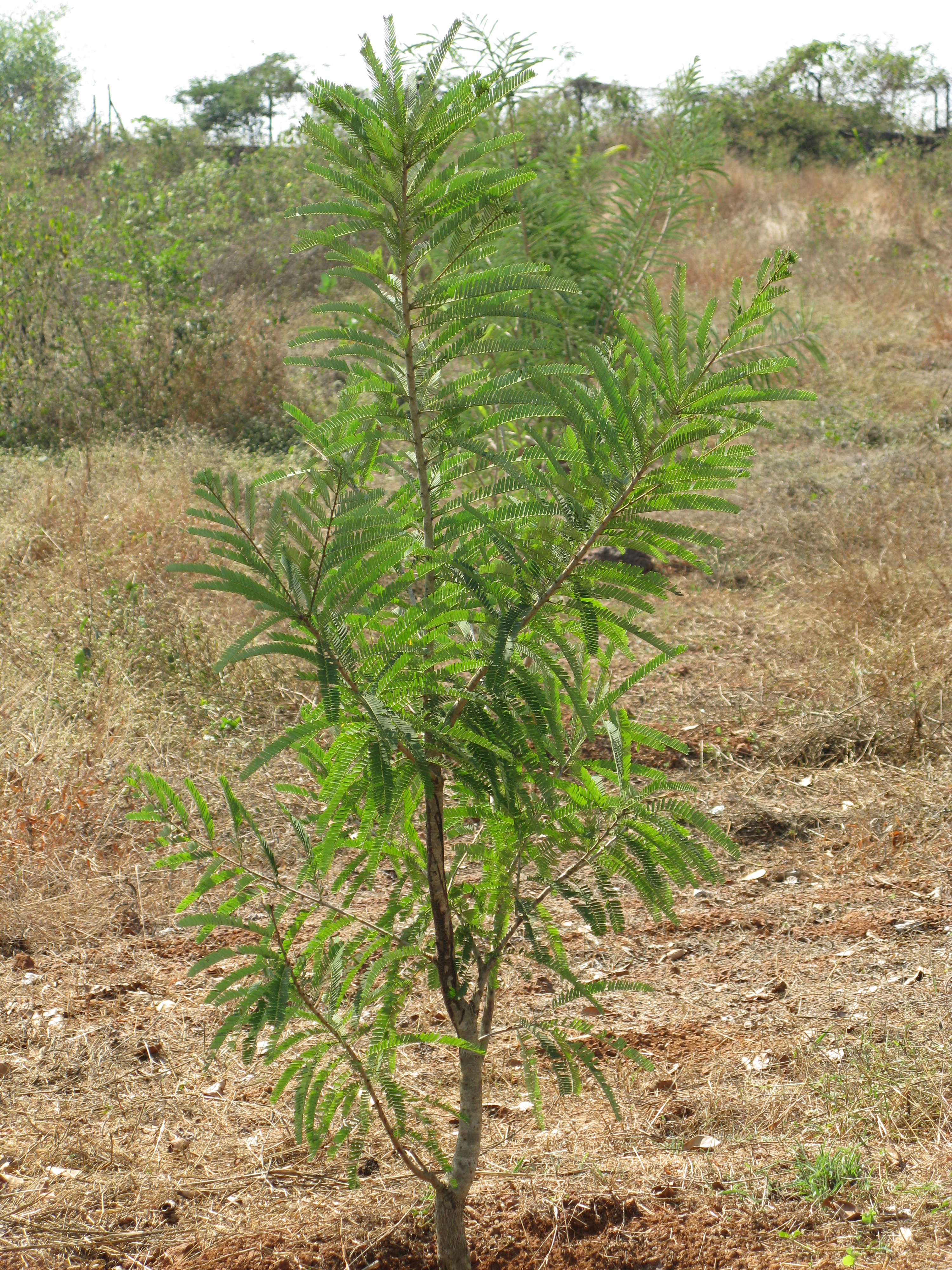
Crop: Indian gooseberry
Scientific name : Phyllanthus emblica
Common / Local Name : Aonla, Amla

Indian gooseberry is a hardy, drought resistant fruit tree that performs well under tropical and subtropical climatic conditions. It can thrive well in well-drained loamy soil as well as heavy clay, provided there is drainage during heavy rainfall during the initial years of establishment. The fruits are a rich source of vitamin C (average value of 600 mg.100g)
The land should be ploughed well and pits of 60-75 m3 should be dug out at a spacing of 6m. Planting should be taken up immediately after the onset of monsoon.


The pits should be kept open for 2-3 weeks. Later on, 15-20 kg of manure should be mixed with the dug out or top soil and then, filled back into the pit. Well established grafts should be planted in the centre of the pit with the graft joint atleast 15 cm above the ground level. Spacing of 6x6 m can be followed. Staking need to be provided to avoid lodging and /or breaking of graft joint.


Krishna
Kanchan
NA-10
NA-7
Chakaiya
Banarasi
Francis
BSR-1
 Krishna
Krishna
 Kanchan
Kanchan
Full dose of manure and half of chemical fertilizers should be applied at the beginning of monsoon season (April-May) and remaining half towards the end of the monsoon (October). Fertilizer dosage is furnished in table 1.
Years after planting |
Manure |
N |
Urea |
P2O5 |
Rock Phosphate |
K2O |
MOP |
(kg/plant) |
g/plant/year |
g/plant/year |
g/plant/year |
||||
1 |
20 |
100 |
65 |
- |
- |
- |
- |
2 |
25 |
200 |
|
|
|
|
|
3 |
25 |
400 |
|
|
|
|
|
4 |
25 |
750 |
|
600 |
|
750 |
|
5 |
25 |
750 |
|
600 |
|
750 |
|
6 |
25 |
750 |
|
600 |
|
750 |
|
7 |
25 |
750 |
|
600 |
|
750 |
|
8 |
25 |
750 |
|
600 |
|
750 |
|
9 |
25 |
750 |
|
600 |
|
750 |
|
10 |
25 |
750 |
|
600 |
|
750 |
|
During initial years of establishment, protective irrigation should be given during the drought phase ie from November to May (in Goa). Irrigate the grafts once in 7 days. After 4-5 years of planting, irrigation is seldom practiced.
Weeding as and when required to keep field clean
Removal of sprouts or shoots from rootstock has to be strictly and periodically followed
Mulching of basins should be done to avoid transpiration loss.
Providing shade to young plants with coconut leaves on 2-3 directions is also advocated to protect the plants from wilting during dry spell and also from cattle damage
Training should be effected to have clean main trunk of 75 cm to 1 m. Well spaced lateral branches, 4-5 in number can be allowed from the main trunk.
Dead, diseased and criss-cross branches should be removed
During early stages of crop, green manure crops or vegetable crops can be cultivated in the interspaces.
Average yield of 20-25 kg of fruits/tree/year.
Input availability |
Address/Contact details |
| Plants | ICAR farm/ State Govt Farms |
Fertilizers |
For detailed list kindly click here |
Pesticides |
For detailed list kindly click here |
| Machineries | Goa Bagayatdar Stores |
|